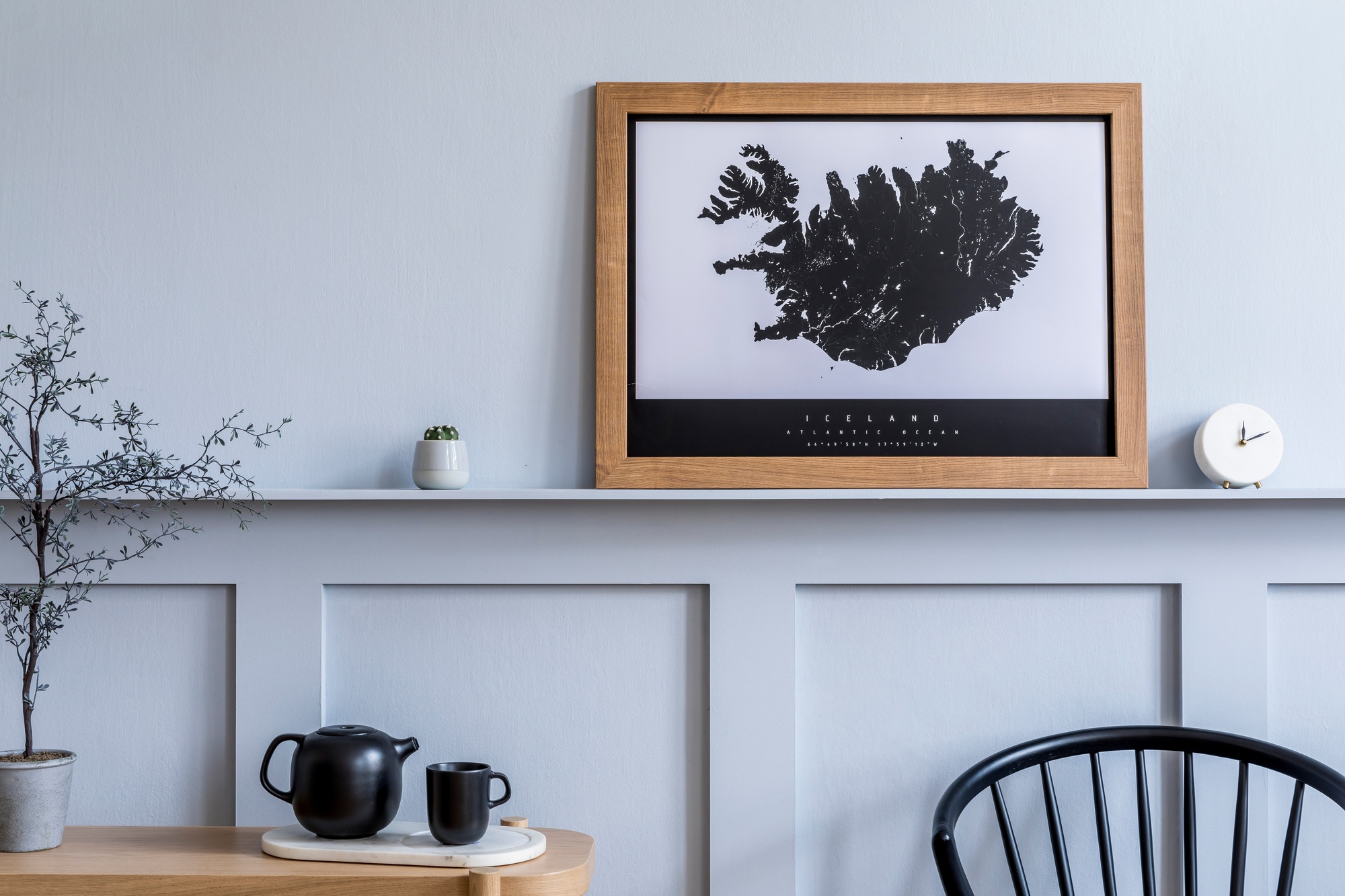Key Takeaways

- Market Research is Crucial: Analyze local real estate trends and competitors to understand demand and identify your target audience for effective business positioning.
- Develop a Comprehensive Business Plan: Outline your services, pricing strategy, and financial projections to create a roadmap for success and sustainability in the competitive home staging industry.
- Build and Showcase Your Portfolio: Use high-quality images of staged homes to display your work, either through personal projects or collaborations, enhancing your credibility in the market.
- Network with Real Estate Professionals: Establish strong relationships with real estate agents and brokers to expand your client base and gain valuable referrals.
- Utilize Effective Marketing Strategies: Leverage social media platforms and a professional website to showcase your projects and connect with potential clients; consider local advertising for greater visibility.
- Commit to Continuous Learning: Stay updated on industry trends and techniques by enrolling in courses and attending workshops, ensuring your skills remain relevant and competitive.
If you’ve got an eye for design and a passion for transforming spaces, starting a home staging business might be your perfect venture. With the real estate market booming, sellers are increasingly turning to staging to make their homes more appealing to buyers. This means there’s a growing demand for skilled stagers who can help properties stand out.
Launching your own home staging business isn’t just about arranging furniture; it’s about creating an inviting atmosphere that resonates with potential buyers. You’ll need to understand market trends, develop a unique style, and learn the ins and outs of running a business. Ready to dive into the world of home staging? Let’s explore how you can turn your passion into a profitable career.
How to Start a Home Staging Business

Starting a home staging business involves several strategic steps that lead to success in the small business sector.
- Research the Market: Analyze local real estate trends. Study successful stagers to understand their methods.
- Create a Business Plan: Outline your services, target audience, pricing strategy, and marketing plan. Include financial projections for the first year.
- Build Your Portfolio: Stage homes using personal spaces or collaborate with agents. Capture high-quality photos showcasing your work.
- Develop Your Brand: Choose a memorable business name, design a logo, and create a professional website that displays your portfolio.
- Network with Real Estate Agents: Establish relationships with agents and brokers. Attend local real estate events to build connections.
- Invest in Supplies: Acquire essential staging items such as furniture, decor, and accessories. Focus on versatile pieces that enhance various spaces.
- Establish Pricing Models: Decide on pricing strategies based on your service offerings. Consider flat fees, hourly rates, or package deals.
- Market Your Services: Utilize social media platforms like Instagram and Facebook to showcase your projects. Invest in local advertising and attend home shows.
- Ask for Referrals and Reviews: Request feedback from clients after staging projects. Use positive testimonials to build credibility.
- Continue Learning: Stay updated with the latest design trends and staging techniques. Consider enrolling in courses or certifications focused on home staging.
These steps provide a clear path for you to effectively start a home staging business and thrive in a competitive real estate market.
Understanding Home Staging

Home staging involves preparing a home for the real estate market, enhancing its appeal to potential buyers. This critical process encompasses redecorating, rearranging furniture, and improving aesthetics to showcase the home in its best light.
What Is Home Staging?
Home staging refers to strategically enhancing a property to attract buyers. This enhancement includes:
- Rearranging home decor and furniture to create flow.
- Adding or removing furniture and decor items to optimize space.
- Improving lighting to highlight key features.
- Ensuring the home appears move-in-ready, which significantly boosts buyer interest.
Benefits of Home Staging
Home staging offers several benefits for sellers looking to maximize their property’s appeal:
- Enhanced Appeal: Buyers visualize themselves living in a well-staged home.
- Faster Sales: Properties that undergo home staging often sell faster than those that remain untouched.
- Higher Offers: Staged homes tend to receive higher offers, as they present a polished image that attracts serious buyers.
Understanding these elements proves vital as you explore how to establish a small business in home staging.
Researching the Market

Researching the market sets the foundation for a successful home staging business. This process involves understanding local demand, analyzing competitors, and identifying your target audience.
Analyzing Local Competition
Assess local competition by identifying existing home staging businesses. List at least three competitors and evaluate their strengths such as experience, service variety, and pricing. Examine weaknesses like inadequate online presence or low customer engagement. Collect data on their marketing strategies to identify gaps in the market that your small business can fill. Utilize platforms like Google for reviews and social media for customer feedback to gain insight into their reputation.
Identifying Your Target Audience
Identify your target audience by analyzing demographics of potential clients. Focus on segments such as first-time home sellers, real estate agents, and property developers. Gather information about their preferences including design tastes and budgets. Understanding the characteristics of your ideal clients helps you tailor your services effectively, ensuring you meet market needs. Use surveys or interviews with local agents to refine your approach and enhance your value proposition in this competitive landscape.
Creating a Business Plan

A comprehensive business plan serves as the foundation for your home staging business. This plan outlines crucial strategies and directions for achieving success in a competitive market.
Defining Your Business Model
Define your business model by deciding on the services offered. Choose between complete home staging services, consultations, or rental of staging furniture. Identify your target market segments. Consider first-time home sellers and real estate agents. Establish a pricing model that reflects the value of your services and aligns with client expectations.
Setting Goals and Objectives
Set specific goals and measurable objectives for your business. Focus on short-term milestones such as acquiring your first five clients per month. Aim for long-term objectives like achieving a revenue target of $50,000 within the first year. Track progress regularly to ensure alignment with your business vision.
Budgeting and Financial Planning
Budgeting requires careful estimation of startup and ongoing costs. Calculate startup costs, including furniture, design software, transportation, and insurance. Anticipate initial marketing expenses to build brand awareness. Factor in ongoing operational costs such as employee salaries, workspace rent, and utility bills. Employ financial planning strategies to secure funding through personal resources or small business loans. Monitor cash flow regularly to ensure sustainability and profitability.
Legal Considerations

Addressing legal aspects is crucial when starting a home staging business. Navigate through essential elements such as registration, licenses, permits, taxes, and insurance to ensure compliance and protection.
Registering Your Business
Choose a legal structure for your home staging business. Popular options include sole proprietorships, partnerships, Limited Liability Companies (LLCs), and corporations. LLCs provide limited liability protection, separating personal assets from business liabilities and avoiding double taxation.
- Decide on the business name that reflects your brand.
- Register your business name with the appropriate state authority.
- File necessary paperwork to establish your selected business structure.
Obtaining Necessary Licenses and Permits
Secure required licenses and permits to operate legally in your area. The specifics may vary based on state and local regulations.
- Research state and local regulations that apply to home staging.
- Apply for any business licenses that your municipality requires.
- Check for additional permits that may pertain to staging services.
Understanding Taxes and Insurance
Recognize the tax obligations that accompany running a small business, including income tax, sales tax, and potential payroll taxes if you hire. Business insurance protects against unforeseen events that could impact your operations.
- Consult a tax professional for tailored advice on tax implications.
- Consider acquiring liability insurance to cover potential claims related to staging services.
- Explore additional coverage options such as property and equipment insurance to safeguard your business assets.
Developing Your Skill Set

Developing your skill set is essential for starting a successful home staging business. Understanding the core competencies will elevate your staging effectiveness and broaden your market appeal.
Learning the Art of Staging
Mastering the art of staging requires a deep understanding of interior decorating principles. Focus on choosing the right furniture, matching colors effectively, and designing room layouts that attract potential buyers. Analyze different staging techniques to create inviting atmospheres that showcase the property’s best features. Explore resources such as online courses, webinars, or local workshops that provide insight into current trends and best practices in home staging.
Gaining Certification or Training
Obtaining professional certification or training enhances credibility in the eyes of clients and real estate agents. Research and enroll in established home staging courses that cover critical areas such as color theory, design elements, and effective staging strategies. Many programs offer comprehensive training that culminates in certification, solidifying your position as a knowledgeable professional. Gaining this certification aligns your skills with industry standards, making your small business more competitive and trustworthy in the marketplace.
Sourcing Materials and Tools

Sourcing materials and tools forms a foundational aspect of starting a home staging business. Identifying essential items leads to effective staging and satisfied clients.
Necessary Tools for Home Staging
Acquire a set of essential tools crucial for staging success.
- Measuring Tape – Use this for space assessments to ensure furniture fits well.
- Level – Employ a level to maintain alignment in artwork and shelves.
- Cleaning Supplies – Allocate a range of cleaning tools to maintain properties in pristine condition.
- Styling Items – Gather accessories such as pillows, throws, and vases to enhance visual appeal.
- Photography Tools – Invest in a good camera or smartphone for high-quality imaging of staged homes.
These tools create a professional staging atmosphere and leave a lasting impression on potential buyers.
Finding Furniture and Decor Suppliers
Research local suppliers for quality furniture and decor that align with your staging style.
- Wholesale Furniture Suppliers – Look for wholesalers specializing in rental furniture for staging purposes.
- Online Marketplaces – Explore platforms like Wayfair or Overstock for affordable decor options.
- Local Auctions and Estate Sales – Attend events for unique pieces at competitive prices.
- Furniture Rental Companies – Establish relationships with rental companies for flexible arrangements.
- Consignment Stores – Visit consignment shops for high-quality second-hand furnishings.
Building connections in these areas reduces costs and expands your staging options, enhancing your small business’s ability to perform effectively in the marketplace while appealing to various buyer demographics.
Marketing Your Home Staging Business

Establishing effective marketing strategies enhances visibility and increases client acquisition for your home staging business.
Building an Online Presence
Create a professional website showcasing your portfolio. Include high-quality images of staged properties, client testimonials, and detailed service descriptions. Implement search engine optimization (SEO) techniques to rank higher in search results and attract organic traffic. Utilize blogging to share insights about home staging trends and tips. Establish a contact form for potential clients to easily reach you.
Utilizing Social Media for Promotion
Leverage platforms like Instagram, Facebook, and Pinterest to showcase your staging projects. Post before-and-after images to highlight transformations, and use relevant hashtags to reach a broader audience. Engage with followers through polls, questions, and live videos demonstrating staging techniques. Share valuable content to position yourself as an industry expert while driving traffic back to your website. Host giveaways to incentivize sharing and expand your audience base.
Networking with Real Estate Professionals
Collaborate with local real estate agents and property developers to create mutually beneficial partnerships. Attend local real estate events and networking functions to connect with industry professionals. Provide agents with staging brochures they can distribute to clients. Consider offering special discounts or referral incentives to encourage partnerships. Building relationships enhances visibility within the market, promoting your home staging business effectively.
Managing Your Business Operations
Manage your home staging business operations effectively through streamlined scheduling and client communication practices.
Scheduling Appointments and Consultations
Schedule appointments and consultations with clients using a calendar management tool. Organize all appointments systematically to minimize conflicts and ensure timely responses. Confirm appointments 24 hours in advance to maintain professionalism. Provide clients with multiple time options to accommodate their schedules, enhancing convenience for busy clients.
Client Communication Best Practices
Communicate clearly and promptly with clients. Respond to inquiries within 24 hours, demonstrating your commitment to customer service. Use professional language in emails, texts, and during consultations. Set clear expectations about your services, timelines, and pricing to ensure clients understand the process. Follow up after project completion to request feedback and foster long-term relationships.
Troubleshooting Common Challenges
Encountering challenges is common when starting a home staging business. Addressing these obstacles directly enhances your potential for success.
Dealing with Client Rejections
Embrace client feedback as a valuable tool for improvement. Utilize rejection as an opportunity to refine your approach—request specific reasons for their decisions and adjust your offerings based on their insights. Showcase adaptability by modifying staging proposals to better align with client expectations. Build relationships by maintaining open lines of communication. Engage with prospects even after rejections, remaining available for future opportunities. This strategy not only fosters goodwill but also increases the likelihood of referrals.
Managing Project Timelines and Budgets
Establish clear timelines from the outset of each project. Define milestones for key stages to ensure that you stay on track. Create detailed budgets that outline all expected expenses, including materials, labor, and unforeseen costs. Implement tools like project management software to monitor timelines and budgets effectively. Communicate regularly with clients about progress and any adjustments needed to maintain trust and transparency. Prioritize tasks based on urgency and impact to optimize workflow and ensure all elements meet crucial deadlines.
Tips for Success in Home Staging
Staying informed about the latest design trends and building a strong portfolio enhances success in home staging.
Staying Current with Design Trends
Stay updated with the latest design trends by following industry blogs, magazines, and social media influencers. Attend home staging workshops and trade shows to gain insights into current styles and techniques. Implement popular color palettes and furniture arrangements to attract buyers. Leverage online resources like Pinterest or Houzz for inspiration and ideas. Share your findings with clients to establish yourself as a knowledgeable professional. Research local market preferences and tailor your staging projects accordingly.
Building a Strong Portfolio
Create a comprehensive portfolio showcasing diverse staging projects. Include before-and-after photos to highlight your transformation skills. Document different styles, layouts, and budgets to demonstrate versatility to potential clients. Collaborate with real estate agents to stage properties and capture professional-quality images for your portfolio. Use online platforms to display your work, such as a dedicated website or social media profiles. Regularly update your portfolio with new projects to keep it fresh and relevant, enhancing your appeal to clients.
Conclusion
Starting a home staging business can be a rewarding venture that taps into your creativity and design skills. By understanding the market and honing your abilities you can create spaces that captivate buyers and lead to quicker sales.
Remember to stay informed about industry trends and continuously refine your techniques. Building a strong portfolio and networking with real estate professionals will enhance your visibility in this competitive field.
With strategic planning and a commitment to excellence you’ll not only attract clients but also establish a brand that stands out. Embrace the journey and let your passion for staging transform homes and lives.
Frequently Asked Questions
What is home staging?
Home staging is the strategic enhancement of a property to make it more appealing to potential buyers. This process involves rearranging furniture, optimizing spaces, and improving lighting to create a welcoming atmosphere that helps homes sell faster and at better prices.
How can I start a home staging business?
To start a home staging business, research local real estate trends, develop a unique styling approach, create a business plan, build a portfolio, and network with real estate agents. Establish pricing models and market your services through social media and local advertising.
What skills do I need for home staging?
Essential skills for home staging include mastering interior decorating principles, such as furniture selection, color matching, and layout design. Additionally, staying informed about current design trends and obtaining professional certification can enhance your credibility and competitiveness in the market.
What tools and materials are needed for staging?
Key tools for home staging include measuring tapes, cleaning supplies, styling items, and photography equipment. It’s also important to find reliable suppliers for furniture and decor, utilizing local wholesalers and rental services to manage costs effectively.
How should I market my home staging business?
To successfully market your home staging business, create a professional website showcasing your portfolio and client testimonials. Utilize social media platforms like Instagram and Pinterest for promotions, while networking with real estate professionals can boost market visibility.
What legal considerations should I keep in mind?
When starting a home staging business, ensure you navigate registration, licenses, permits, and taxes. Choosing a legal structure, obtaining necessary licenses based on local regulations, and understanding tax obligations are crucial for compliance and protection.
How can I manage client communication effectively?
Effective client communication involves responding to inquiries within 24 hours, setting clear service expectations, and using scheduling tools for organizing appointments. Following up post-project enhances relationships and encourages valuable feedback.
What are common challenges in home staging?
Common challenges include client rejections and managing project timelines and budgets. Embrace feedback for improvement and use project management tools to stay on schedule. Regular client communication helps maintain trust and transparency throughout the staging process.
How can I build a strong portfolio?
To build a strong portfolio, include a variety of staging projects and before-and-after photos showcasing your versatility. Collaborate with real estate agents for staging opportunities and regularly update your portfolio to reflect your best work.
Why is continued learning important in home staging?
Continued learning is vital in home staging to stay updated with the latest design trends and techniques. Engaging in online courses, workshops, and following industry blogs can refine your skills and ensure your business remains competitive and relevant.
Image Via Envato: photocreo, mariiaplosh, arthurhidden, ckstockphoto, AveCalvar, FollowTheFlowStudio, wichayada69, crystalsing, LightFieldStudios



